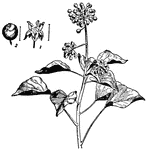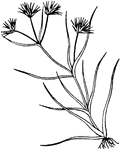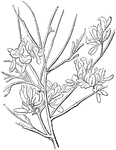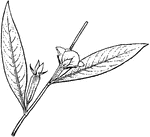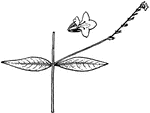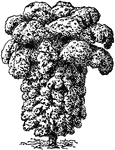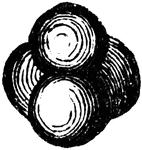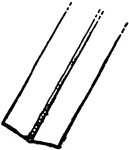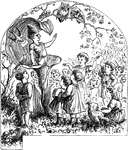
Jack-in-the-Pulpit
An illustration of a little man standing inside of a Jack-in-the-Pulpit plant. The man seems to be a…

Pyrus Japonica
A tree which produces dark red flowers and fragrant green leaves. The leaves are oval and serrated.…
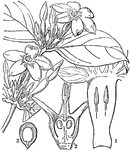
Jasmine
"Jasminum ligustrifolium. 1. a corolla cut open; 2. vertical section of the ovary; 3. section of a seed…

Juncus Acutiflorus
Juncus acutiflorus belongs to a genus of grass-like herbs (Juncus) that grow in boggy places.

Juncus Compressus
Juncus compressus belongs to a genus of grass-like herbs (Juncus) that grow in boggy places.
Juncus Conglomeratus
Juncus conglomeratus, also known as the common rush, belongs to a genus of grass-like herbs (Juncus)…

Juncus Effusus
Known as the soft rush, Juncus effusus is nearly as common as the most common species, J. conglomeratus.…

Juncus Glaucus
Juncus glaucus belongs to a genus of grass-like herbs (Juncus) that grow in boggy places.

Juncus Squamosus
Juncus squamosus belongs to a genus of grass-like herbs (Juncus) that grow in boggy places.

Branch of Juneberry
Also known as Amelanchier canadensis. The branch of a Juneberry bush, native to eastern North America,…

Branch of Juniperus Barbadensis
A species of conifer found in The Bahamas, Cuba, Haiti, and Jamaica.

Jute
Jute, also known as Calcutta Hemp, is a fiber obtained from several species of the genus Corchorus of…

Carding Process in the Manufacuring of Jute
After the softening process in the manufacturing of jute, the fibers are about six feet long, and are…

Softening Process in the Manufacturing of Jute
In the manufacturing of jute, the jute fiber must first be softened. The softening machine consists…

Spinning Process in the Manufacturing of Jute
In the last step of the manufacturing process of the jute plant, the material is taken on bobbins to…
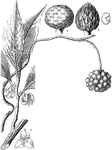
Kadsura
"Kadsura japonica. 1. a calyx; 2. a head of stamens; 3. a pistil; 4. a section of a seed." -Lindley,…
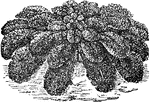
Dwarf Purple Kale
"The Dwarf Purple, of Brown Kale, which is represented in the cut here inserted, is a beautiful curled…
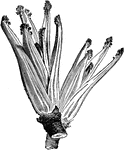
Sea Kale
"This vegetable produces blanched shoots which are cooked and eaten in the same manner as asparagus."—Rawson,…
Oarweed
Oarweed or Tangle (Laminaria digitata) is a species of kelp common to the British Isles and Northeast…
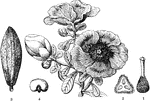
Kielmeyera
"Kielmeyera rosea. 1. the pistil; 2. a transverse section of it; 3. a ripe fruit; 4. embryo." -Lindley,…
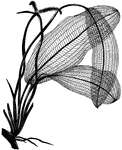
Lace-leaf Plant
An illustration of a Lace-Leaf plant also known as a Lattice Leaf or Lace Plant. The Lace-Leaf plant…
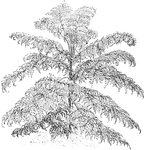
Rhus Glabra Laciniata
A greenish-red plant with laciniate-cut leaves. In the spring, edible crimson berries are produced and…
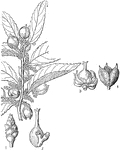
Lacistema
"Lacistema serrulatum. 1. amentum in flower; 2. pistil and stamen. 3. pistil and calyx; 4. fruit in…
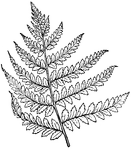
Lady Fern
The lady fern in the popular name of the fern 'Asplenium filix-foemina'. It is variable in size and…
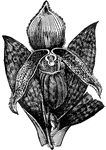
Lady's Slipper
"Lady's Slipper is a genus of plants. The genus is remarkable for the large inflated lip of the corolla.…

Lady's Slipper
Style of a Lady's Slipper (Cypripedium), and stamens united with it; the anther of the two good stamens;…
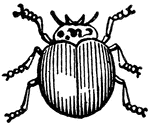
Ladybug
"Lady-bird beetles, or "lady bugs." These beetles are very destructive to plant lice." — Goff,…
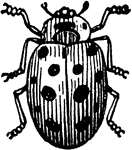
Ladybug
"Lady-bird beetles, or "lady bugs." These beetles are very destructive to plant lice." — Goff,…
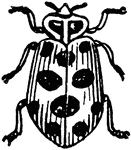
Ladybug
"Lady-bird beetles, or "lady bugs." These beetles are very destructive to plant lice." — Goff,…
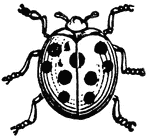
Ladybug
"Lady-bird beetles, or "lady bugs." These beetles are very destructive to plant lice." — Goff,…

Laminaria Saccharina
Laminaria saccharina belongs to the group Laminariæ, a group of algæ belonging to the Phæosporeæ,…

Lamium Album
Lamium album (also known as the white dead-nettle, or archangel) is a member of the Lamium, a genus…
Lanceolate
Shaped like a spear head, broadest near base, tapering to apex, and several times as long as broad.
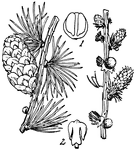
Larch, Cone and Flowers (male and female)
Larch, or Larix, is a genus of hardy, deciduous, coniferous trees of very graceful habit. They bear…
